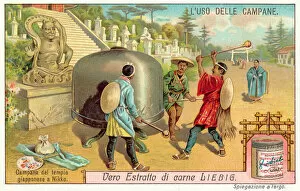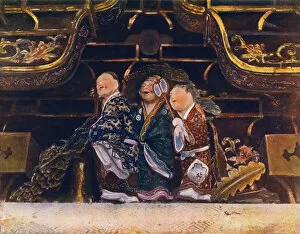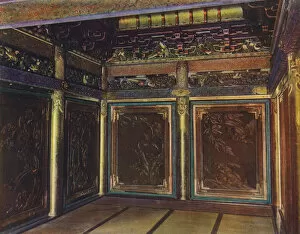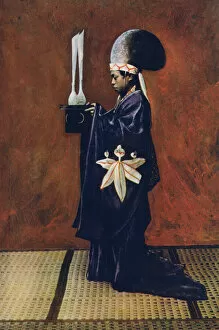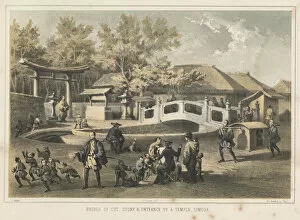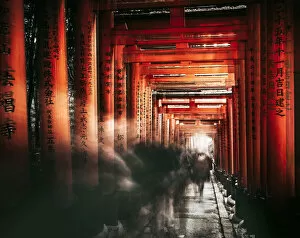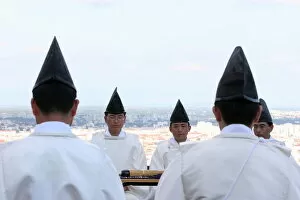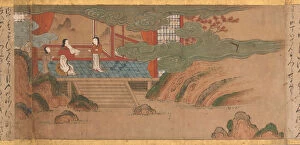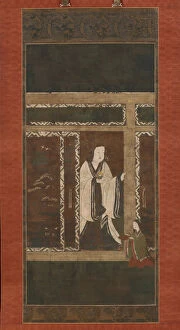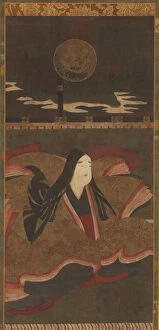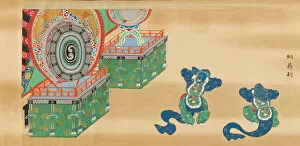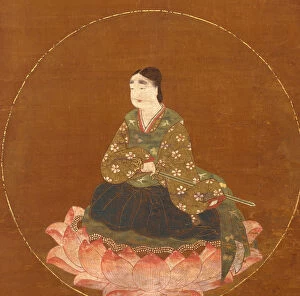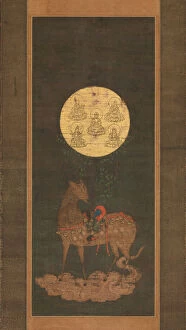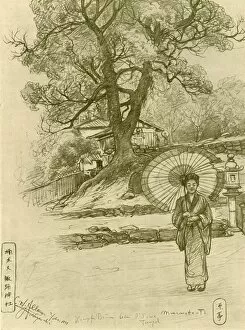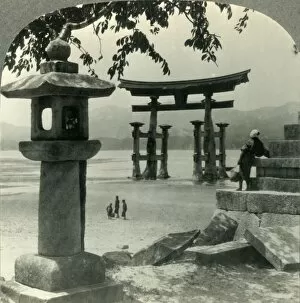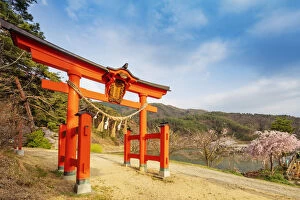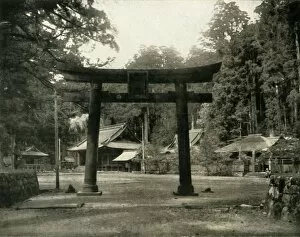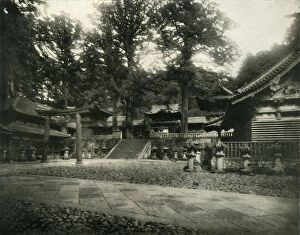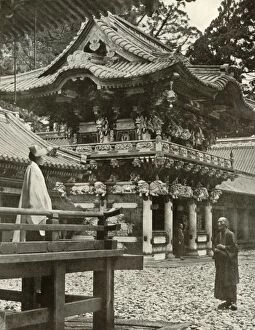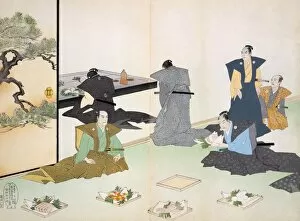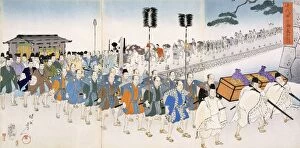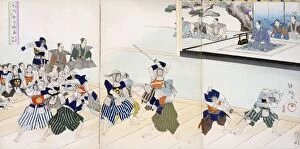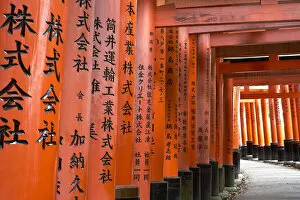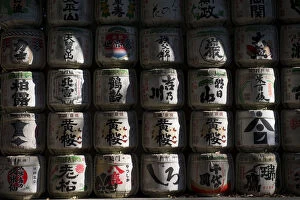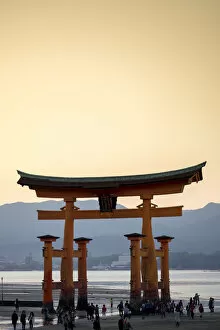Shinto Collection (#9)
Shinto, the ancient indigenous religion of Japan, is deeply rooted in the country's culture and history
For sale as Licensed Images
Choose your image, Select your licence and Download the media
Shinto, the ancient indigenous religion of Japan, is deeply rooted in the country's culture and history. One of its most iconic symbols can be found at the Fushimi Inari-taisha shrine in Kyoto, located in the beautiful Fushimi ward of Kyoto prefecture within the Kansai region. This shrine is famous for its Senbon Torii, a series of tunnels made up of thousands of vibrant red torii gates that create a mesmerizing sight for visitors. Walking through this enchanting tunnel at Fushimi Inari Shinto shrine feels like stepping into another world. Each gate represents a donation from individuals or businesses seeking blessings and protection from Inari, the Shinto deity associated with rice and prosperity. The vermillion-colored floating torii gate adds to the mystical ambiance surrounding this sacred place. Another notable Shinto site is Itsukushima Shrine on Miyajima Island. Designated as a UNESCO World Heritage Site, it boasts stunning views and features an awe-inspiring floating torii gate that seems to defy gravity during sunset. Visitors are captivated by its beauty and spiritual significance. Shinto plays an essential role in Japanese society even today. Meiji Jingu Shrine in Tokyo serves as a popular venue for traditional weddings, blending modernity with ancient customs seamlessly. From Kyoto's historic landmarks to Tokyo's bustling streets, Shinto shrines dotting Honshu Island provide glimpses into Japan's rich cultural heritage. These sites serve as reminders of how deeply ingrained spirituality is within Japanese traditions. Immerse yourself in the mystique and tranquility offered by these remarkable places - whether you explore Senbon Torii at Fushimi Inari Taisha or witness breathtaking sunsets at Itsukushima Shrine - each visit promises an unforgettable experience steeped in centuries-old tradition and reverence for nature.

